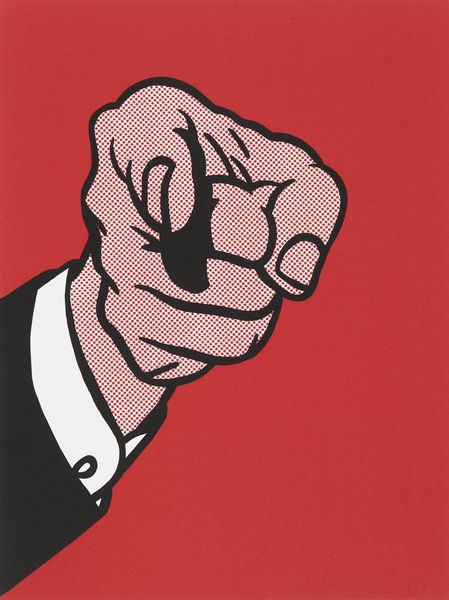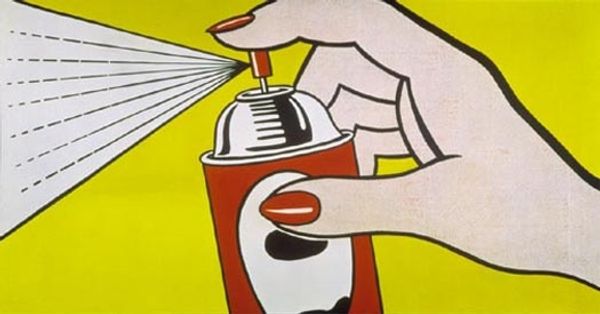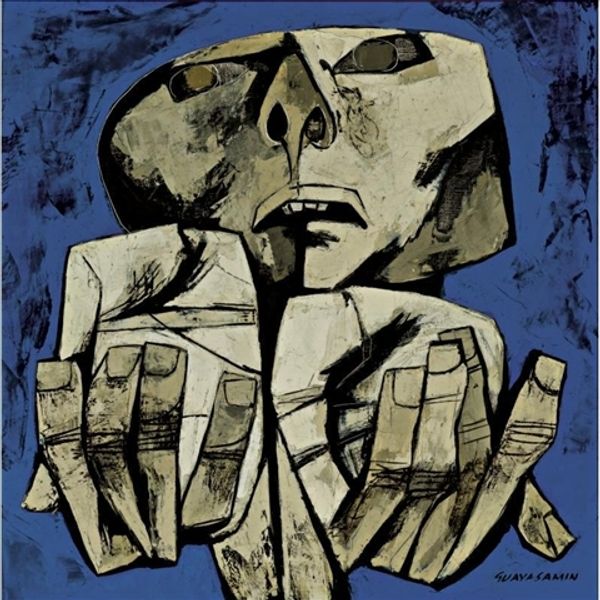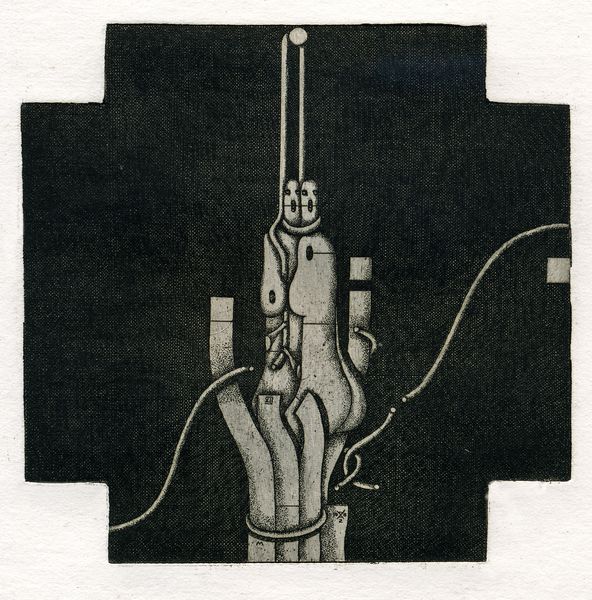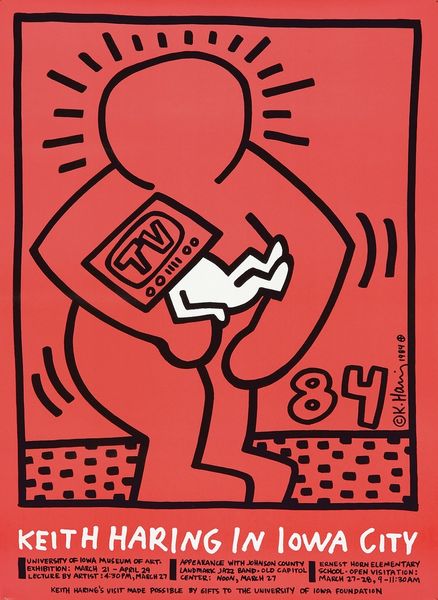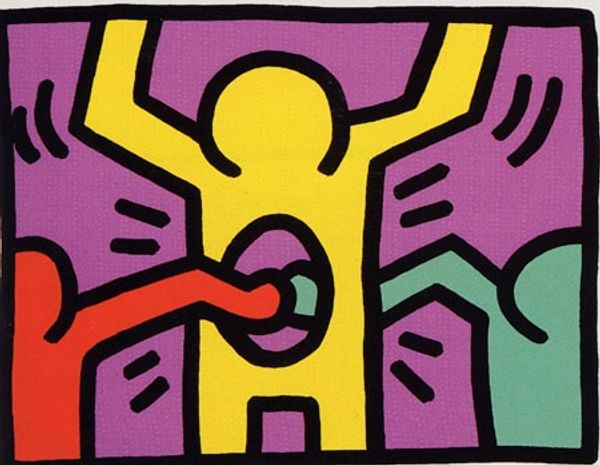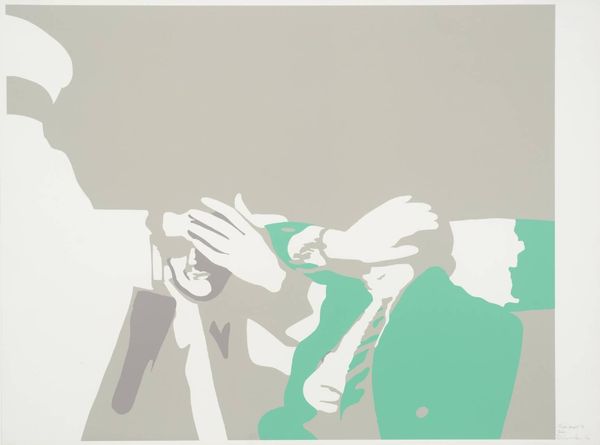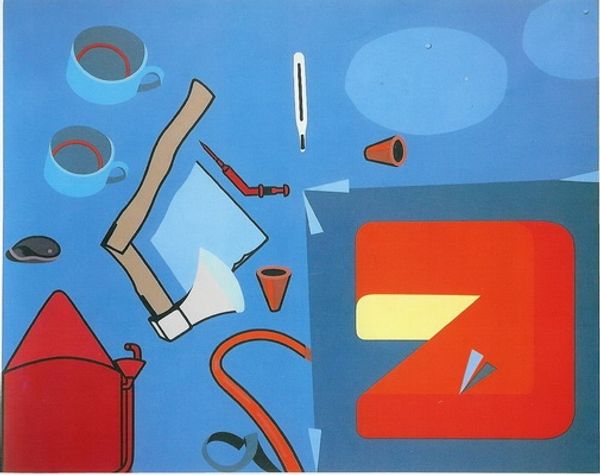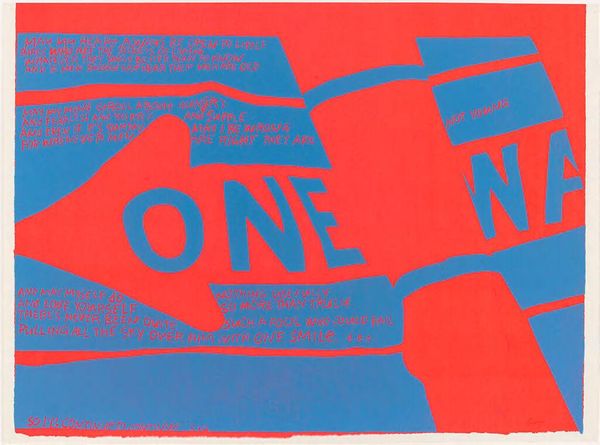
drawing
#
pop art-esque
#
drawing
#
pop art
#
figuration
#
geometric
#
abstraction
#
pop-art
#
human
#
line
Dimensions: 76.2 x 76.2 cm
Copyright: Roy Lichtenstein,Fair Use
Curator: Here we have Roy Lichtenstein's "The Grip" from 1962, rendered in his unmistakable pop-art style. It's a drawing, using strong lines and the now iconic Benday dots. What's your immediate take? Editor: Visually, it's very arresting – that high-contrast red and white really grabs you. It evokes a sense of pressure, almost anxiety, with that forceful hand clenching… something. Curator: The grip itself is interesting. The hand clutches what looks like a mechanical device of some kind, a tension-spring exerciser, perhaps? It's presented almost like an industrial logo. Lichtenstein was, after all, keenly interested in the commodification of everyday life and how advertising permeates our visual landscape. Editor: Precisely. The tension spring—an exercise tool—suggests a certain anxiety around physical perfection, a masculine striving rendered in these flat, impersonal forms. I see it speaking to the post-war emphasis on achieving an ideal body image. The color red heightens this: passion and violence at once. The simplified graphic form gives it a feeling of instant communication, yet beneath that surface lies…what? A kind of hollow pursuit? Curator: Exactly. By elevating what might be found in a newspaper advertisement to the level of “high art,” Lichtenstein’s really forcing us to confront the visual languages of consumer culture. The comic book style—the thick outlines, flat colour and those Benday dots mimicking a printing process—it democratizes art while simultaneously critiquing the very nature of that democratisation. The art market and the artistic endeavor itself became a spectacle, a commentary of everyday cultural iconography. Editor: Yes, the simplification is key. The lack of depth reduces a complex human endeavor, the will to power even, into this abstracted emblem. And what a perfect symbol of an era defined by booming economies and, let's be frank, increasing consumerism of the modern man. There's something deeply ironic in using mass-production techniques to create a singular art object, too, isn’t there? Curator: Absolutely. Lichtenstein makes us consider how these bold, graphic images imprint themselves on our collective consciousness. Editor: Looking again, it continues to resonate through the decades – power, pressure, the persistent visual noise… fascinating. Curator: Indeed, and that persistent tension is palpable even now.
Comments
No comments
Be the first to comment and join the conversation on the ultimate creative platform.
